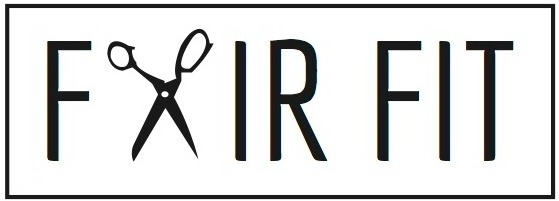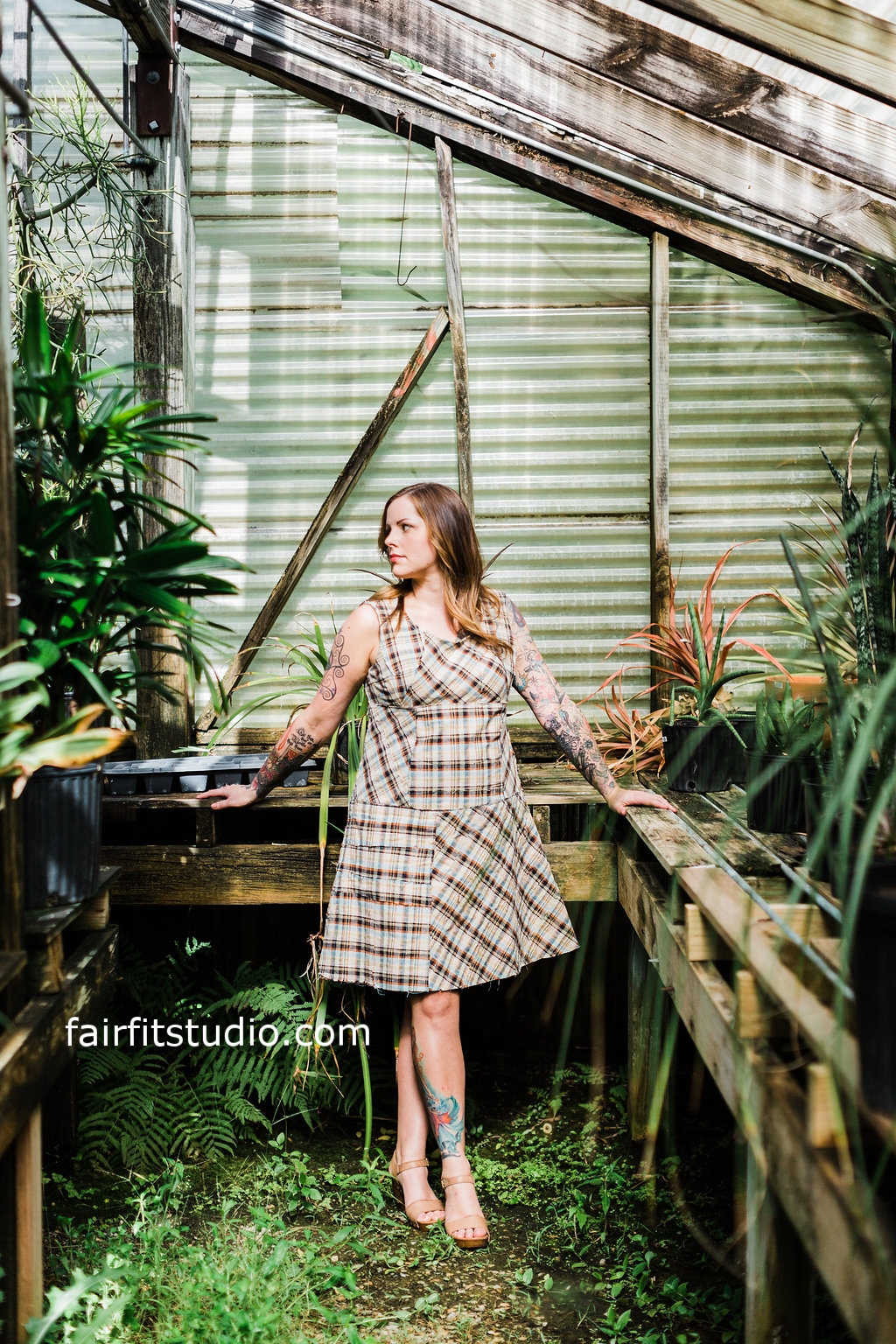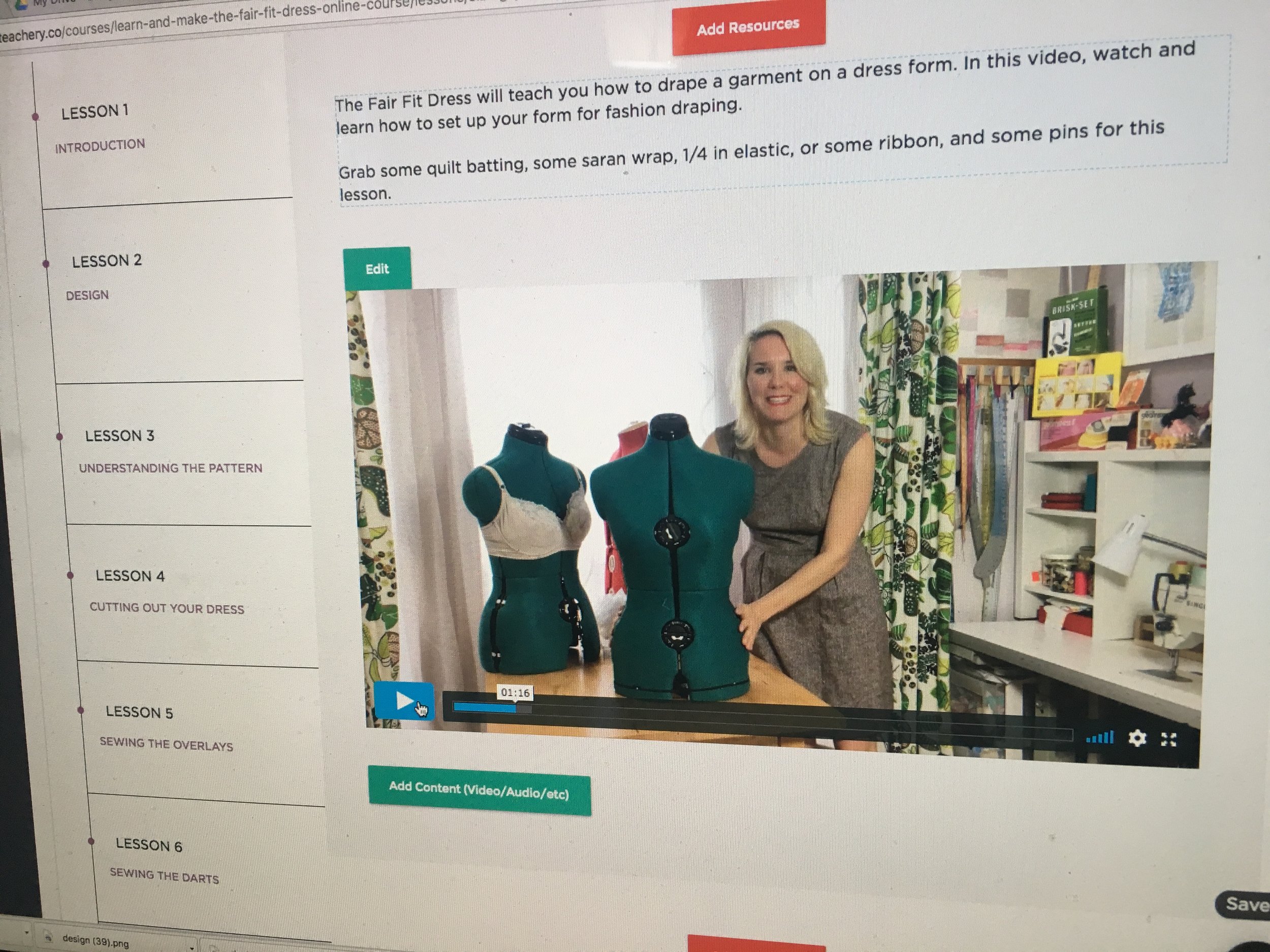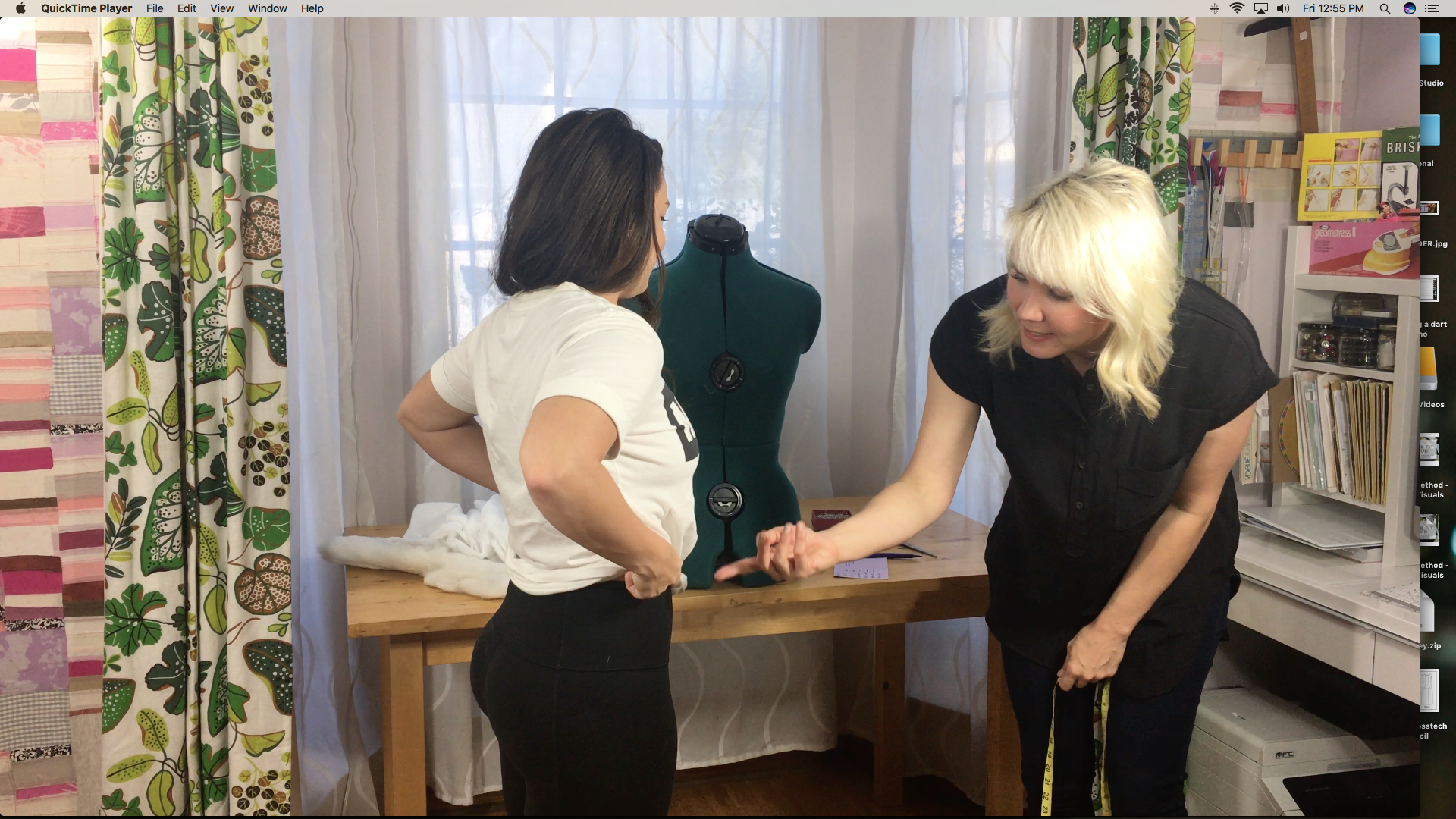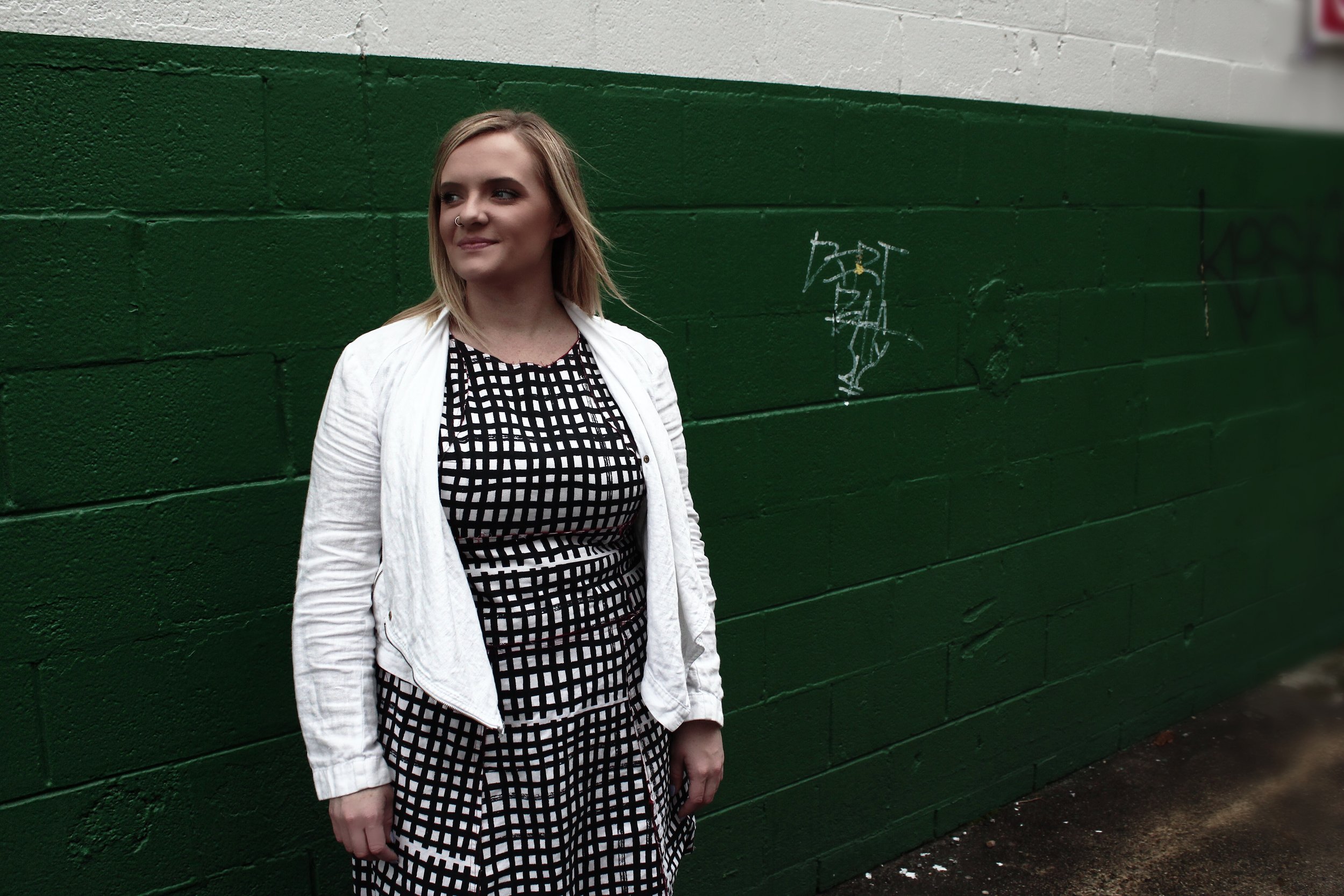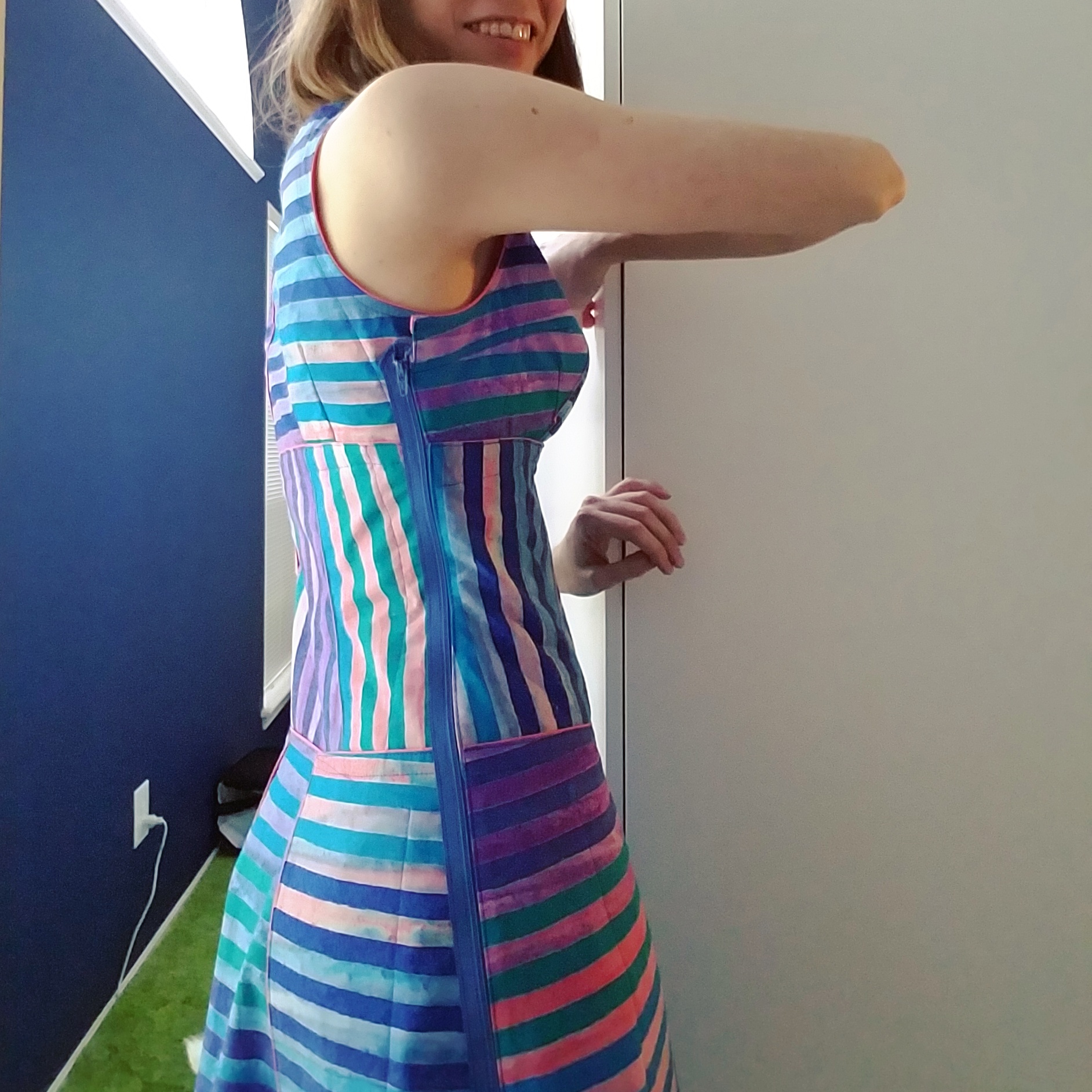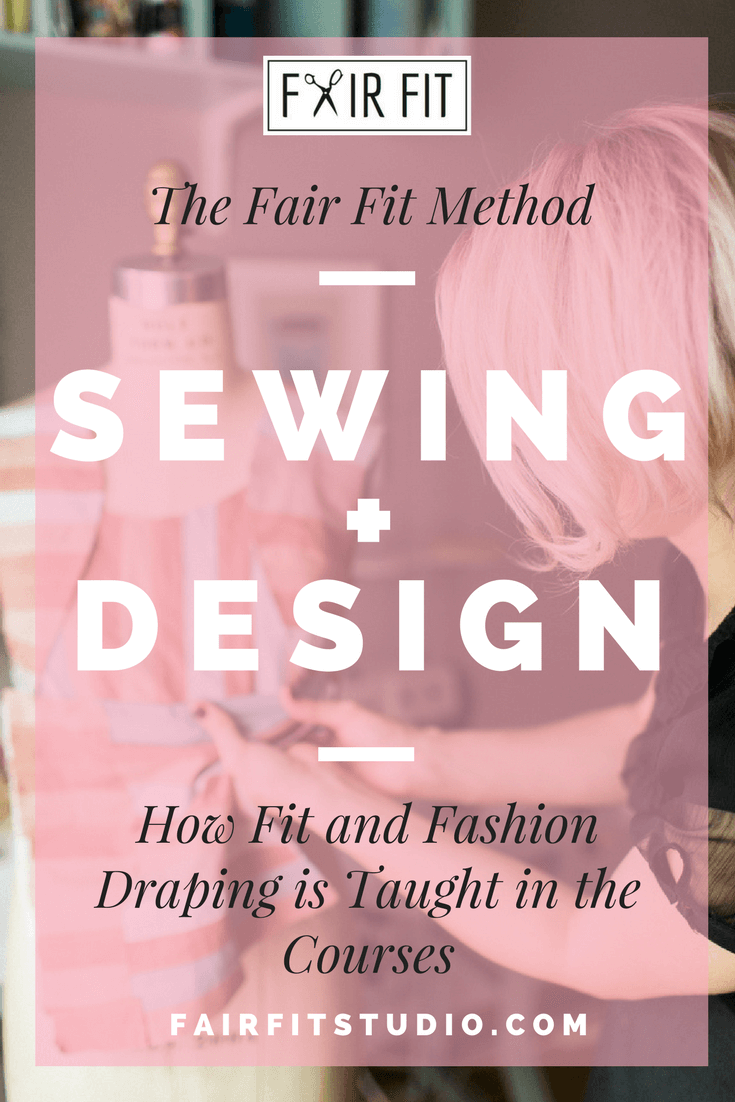The Fair Fit Method Sewing + Design - How Fit and Fashion Draping is Taught in the Courses
Will the Fair Fit Method Work for My Body?
I know how important that question is. I'm sure all of you, as you have advanced on your path of learning to sew and make your own clothing have had a pattern fail, or have sewn up a garment that just didn't look right on your body. With every new pattern you sew up, you may face a potential disappointment, no matter how advanced you are as a sewist.
In my personal projects and practice of sewing clothing for myself, I have learned some impactful lessons when it comes to pattern choice. When I first started out, I definitely picked cute and trendy styles that I thought would work, or imagined would be great for me when I saw them on Instagram. And with this way of choosing a sewing pattern, I had A LOT of sewing fails when it came to my proportions and personal style.
Now that I have a more critical approach, I rarely have a fail. I have learned to look at what I'm sewing, and to choose my patterns much more objectively because I have trained my eye to examine the garment's proportions before I attempt it. And if I take a risk on a new pattern, and I sew it up, from this experience I know exactly what I need to do to change it.
I also sew with a lot of students in person, trouble shooting on the spot in private lessons, and have helped many of my students over the years address the same issues. And what I have seen is that typically most people have the same 3 or 4 alterations they have to do to get a garment to work. And if you are doing more than that, as I have insisted in my writings to you and my workshops, it's likely best to move on and try another project.
Is pattern drafting and alteration an area you are focused on learning more about too? In my email newsletter, I send articles to teach you sewing practices to create clothing that is meaningful to you. Sign up to receive email lessons on garment design, the latest blog posts and video tutorials, and all the latest class announcements and promotions.
Proportion
Proportion is what's critical, and the Fair Fit pattern is designed to play with proportion so that you can really customize the dress. Folks who have common body features like broad shoulders, shallow chests, and sway back, broad hips narrow waist, heck- we all have a different place for our natural waist, will find that the shiftable and adaptable nature of how the pattern is graded can really help you customize the fit.
What I ask of you is to not approach the Fair Fit courses as just a sewing pattern. It's not a traditional cut and sew pattern where the look and style is set. This pattern is a learning tool, meant to help you advance your skills in sewing and design.
Fashion draping
In each course, its REQUIRED that you have an adjustable dress form. I’m going to teach you how to build and pad it to your body and measurements- a valuable skill for ANY of your sewing projects, not just Fair Fit garments. We use the common, plastic forms that you can adjust the circumferences, you do not have to have a fancy Wolfe or pattern making form. In fact, I only use the adjustable forms, because they allow for me to really adjust to suit an individual body's nuances. If you are purchasing, just get the Dritz or Singer form on Amazon if you don't already have a form.
For folks who are plus sized, or petite, you really need to look for the forms that are sized for your body measurements. These are on Amazon as well, just be sure to check their sizes to make sure that it compares to your body.
Some people ask if they can make their own form, usually this is done using a diy tutorial and duct tape. I say, go for it! If you are willing to invest the time, and want to go through the project and effort, that way of working will get you a form close to your body. You just have to be sure you can pin to it, because you will need to stick some pins into the form.
Every project in the Fair Fit Method will be draped, so by the end of this program, you are going to have a greater understanding of how designers think through their projects, adding and editing as they go, and learning to develop a fluidity that you can’t get with cut and sew patterns. I consider the draping lessons to be one of the most valuable aspects of the course, it is not something commonly taught and takes quite a lot of experience to build up knowledge of the skill. In each course there are videos and demonstrations to walk you through the draping, and also how to trouble shoot fit on your form.
“ONE OF MY KEY TAKEAWAYS FROM THE COURSE WORK HAS BEEN LEARNING TO THINK (AND ACT) IN THREE DIMENSIONS THROUGHOUT THE WHOLE SEWING PROCESS, NOT CUTTING OUT A PATTERN, SEWING IT TOGETHER, AND HOPING IT FITS WHEN YOU PUT THE FINISHED GARMENT ON. THE FAIR FIT METHOD AND WORKING WITH THE DRESS FORM HELPED ME PRACTICE FINE MOTOR SKILLS AND HAND/EYE COORDINATION HADN’T BEEN USED IN THAT WAY IN A LONG TIME.”
The draping aspect of the method going to teach you a lot about fit for your body. You will learn principles and practices, but more importantly the problem solving skills and confidence to fit for yourself. One of my favorite parts about teaching the Fair Fit Method is seeing the lightbulbs turn on as a student learns to not over think fit and that you can tackle it swiftly, effectively, and have fun while doing it.
A Student Example
When it comes to skirt fit, fitting your backside can present a challenge. Melissa's size for her waist and hips can be all over the map with cut and sew patterns, and ready to wear skirts really frustrate her because they always need alteration. Melissa being an adventurous student of Learn and Make the Fair Fit Skirt, was willing to be an example of how to pad the form and adjust the pattern for all kinds of butt and hip variations. You'll get to learn what she learned in the course, and I use her as an example of how to fit skirts so that they flatter, not ride.
Please note, this is just one example. You will learn how you can do the same exercise for yourself, regardless of how you compare in size and proportion to any one else.
Megan's Example
Megan is a PHD fashion student at LSU university who also agreed to test the course. She is a an experienced draper, and it was helpful for me to see if she liked the methods that I teach as much as the methods she's learned previously. In the course Learn and Make the Fair Fit Dress, Megan and I draped and padded her mannequin together, adjusting for the shape of her body and working through a check fit. You will learn this as well in the course. As I continue to work with more and more students, it really becomes clear that no matter the various body types, we all start in a similar place and follow the same process.
A Look at Different Kinds of Fit From Our Testers
Photo and Dress by Brooke Wilkerson @sewbrooke - https://customstyle.wordpress.com/
With 16 years of professional sewing experience, my friend and colleague Brooke Wilkerson is very skilled at fitting herself, having worked in workrooms where she could get assistance from her fellow co workers, as well as her own research and application of pattern alteration methods. I knew Brooke's skill would be such a valuable asset to the test because she would be able to find fit issues I couldn't see. And Brooke being petite has a lot of fit concerns that just aren't talked about very often in the sewing world.
With Brooke's insights, we were able to address how to alter the Fair Fit pattern in many exciting ways. I've featured a lot of Brooke's advice and insights through out the course, Learn and Make the Fair Fit Dress, so you will get to learn from her approach too!
Photo and Dress by Helen Wilkinson @helens_closet - http://helenscloset.ca/
Helen Wilkinson of @helenscloset and the @lovetosew.podcast was another team member who helped me test the dress. I love Helen's patterns and the ways that she creates your go to pieces that every wardrobe sewer needs in her closet. I was eager to see how Helen worked with the pattern.
Helen not only helped me make aspects of the course flow better for busy wardrobe sewists, but she fitted the dress beautifully for someone who hadn't really draped before. With Helen's feedback, I determined that future students needed more waist and torso customizations. Thanks to Helen's participation and input, I added another torso variation to the dress course so the pattern customization pack is ready to go.
Photo and Dress by Rachel @makerstyle - http://makerstyle.ca/
Rachel from the Maker Style Podcast participated in the course because she was really interested in learning more about fit, and had faced many frustrations with it. There can be issues with some cut and sew patterns that are hard to trouble shoot for a petite person, specifically gaping at the chest and armhole bust area. Rachel was worried that she wouldn't be able to test the course because she also had a dress form that was not made for petites, but I thought this would be a good challenge to see if we could address the top fit questions and that it would help more folks like her learn from her solutions.
Because the pattern is customizable, I was able to coach Rachel on how to fit the bodice, and teach lots of the pattern alterations. What she learned also applies to other patterns that she will sew up. Lucky for future students, these fit solutions are included in the alteration archive of the course, so you will get to learn them too.
Photo and Dress by Bridgit O'Donnell @brodonn - girlandmachine.com
Bridgit was a wonderful tester, she communicated with me throughout the test, asking great questions and helping me to see where I could add more information. One of the fit solutions we address with the course was how to adjust back pooling, when the fabric sits too much at the top of your butt. We did a different alteration for Bridgit, adding in darts to the back torso.
I feature Bridgit's dress in a later post and some of the process of it in a post coming up, so look for more on that. If any of you have sway back fit questions, her dress really helped us see more ways that the pattern can help you learn what to do.
Back to the Original Question - Will the Fair Fit Method Work for my body?
I hope from this post you can see that its more of a question of are you willing to work with the pattern to learn more about the fit? I really haven't found someone who hasn't been able to make a garment from it, however, of course you are going to have some folks who just don't like the nature of the dress. And some dresses, or skirts, aren't flattering for all proportions and body types, so I'm definitely not going to claim that style wise it's for everyone. You also have to make sure that the size range of the pattern works for you.
The Fair Fit Pattern is a tool that you can use to enhance your learning edge, and learn so many skills and techniques to grow your sewing practice. I'm going to be showing you more garments and more examples of what's been made by our students so far.
Stay Tuned!
If you are interested in taking courses in the Fair Fit Method, the next opportunity to enroll begins soon. You can visit https://www.fairfitmethod.com/ to learn more and read all about the program and full curriculum. If you want to know right away when enrollment opens again, click the button below and you will receive email updates, articles, and notifications when registration begins.
Photography by Carolynn Amy Siebert and Lily Brooks and the other named photographers from the article. All Images ©Andrea Eastin Fair Fit TM and are used exclusively for fairfitstudio.com. Never use or post images or my writing without my written permission.
